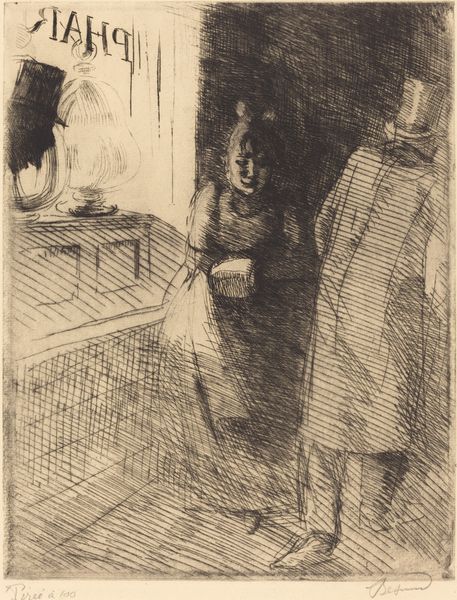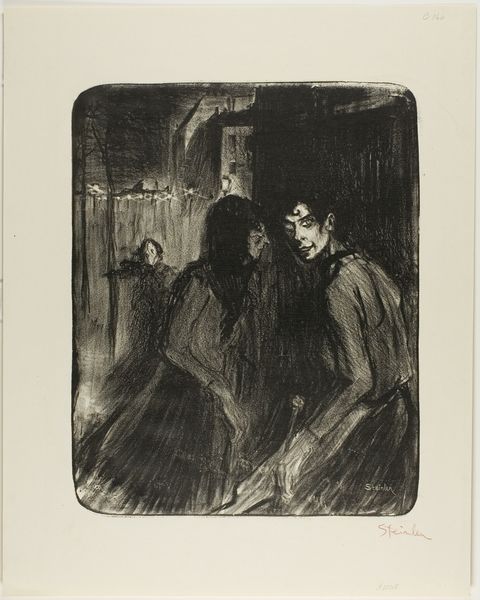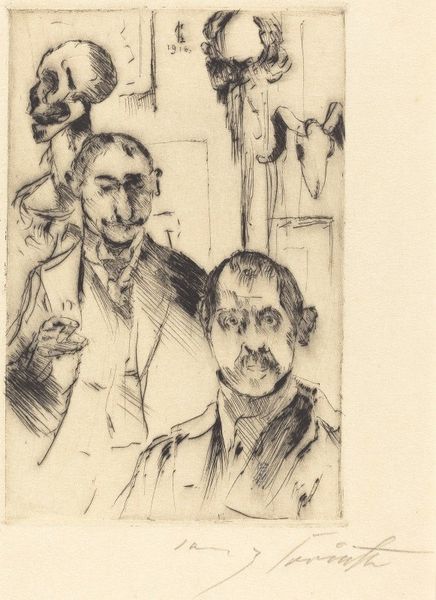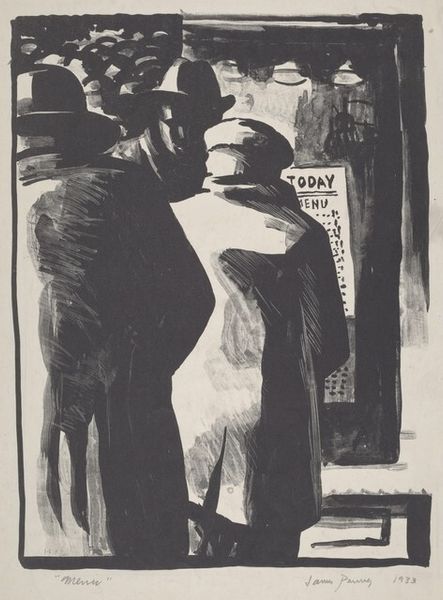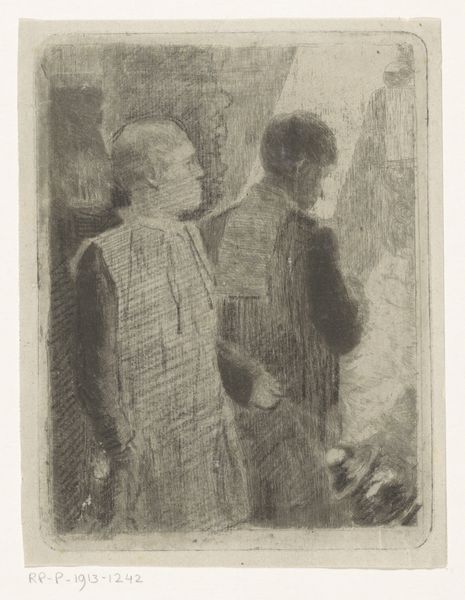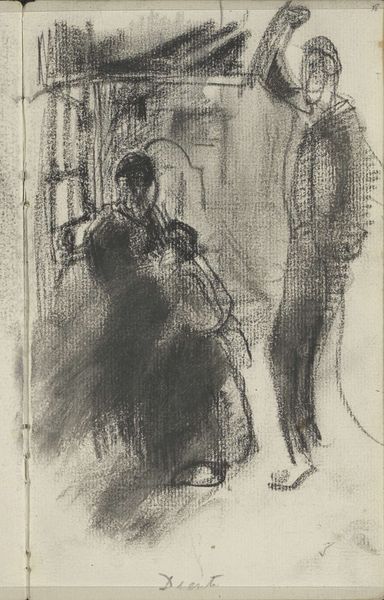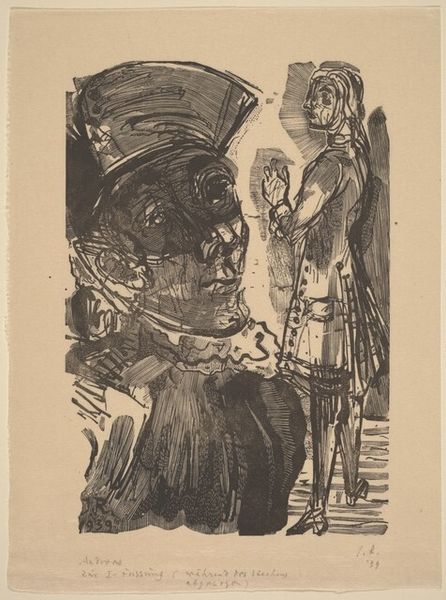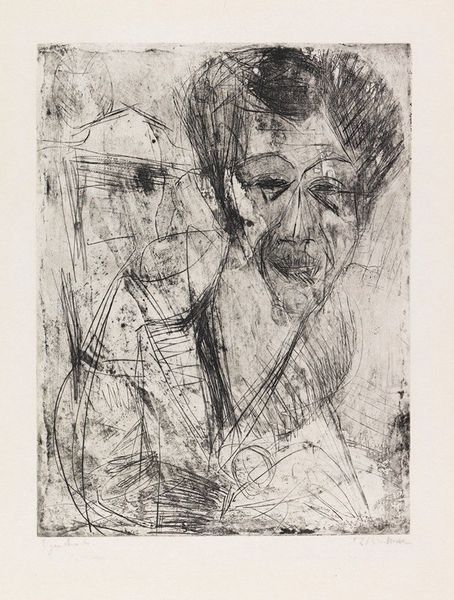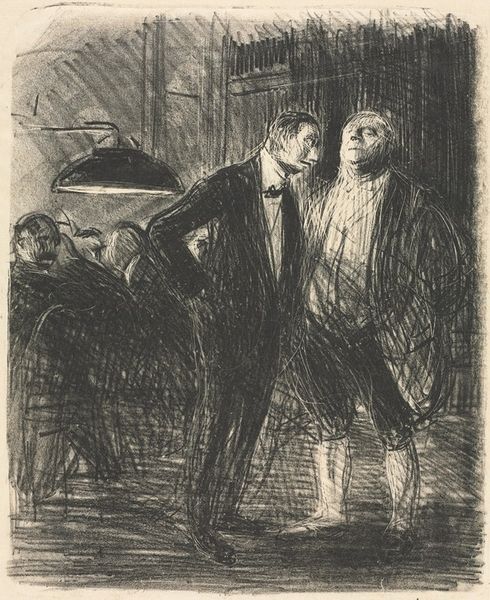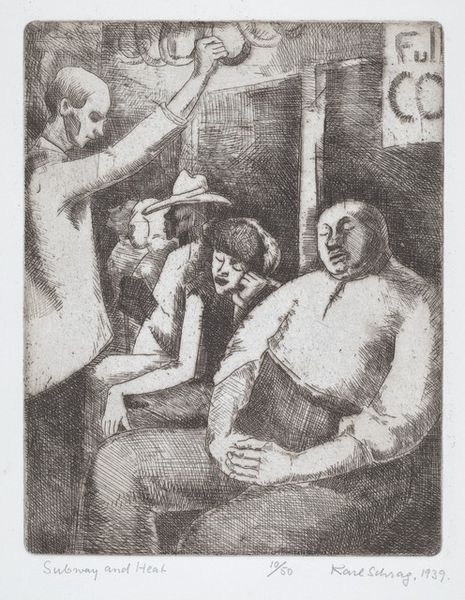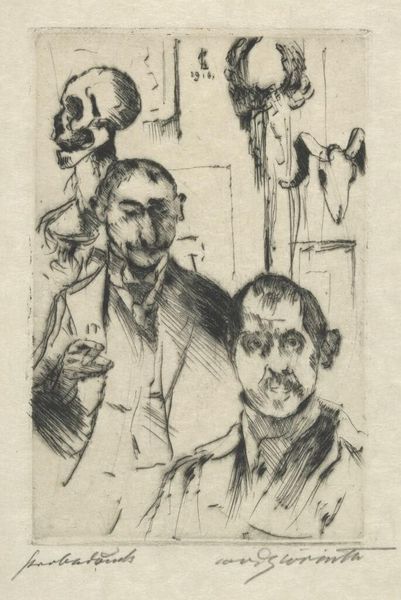
drawing, print, etching
#
portrait
#
drawing
# print
#
etching
#
figuration
#
expressionism
Copyright: Public Domain: Artvee
Curator: Immediately, there's an unsettling intimacy in Lovis Corinth's "In the Studio," an etching from 1919. The angular lines carve out an unexpectedly tense interior. What strikes you first? Editor: It’s stark, isn’t it? The rawness of the etched lines conveys a psychological vulnerability, an exposure. It's an invitation to probe into gendered assumptions that continue to pervade society. It makes me question how Corinth views both himself and the female figure beside him. Curator: Indeed. The rough, expressive lines characteristic of the Expressionist movement here become potent signifiers. The male figure, presumably Corinth himself, is formally clothed and appears somewhat distracted as he glances downward toward an object in his hands, obscuring any kind of direct gaze, and standing near what is most likely the figure of one of his models, who stands slightly behind and left of Corinth. She is, shall we say, without pretenses. I am compelled to ask if Corinth suggests a deeper vulnerability behind the artistic process, through such careful juxtapositions, that artifice always gives way to truth? Editor: Perhaps. Or maybe this is about asserting power. Look at the spatial dynamics. She is behind him. He's at work; she is being worked *on*. Even the studio as a 'sacred' space can replicate—or perpetuate—dynamics found outside. I see the artist in this moment, as one complicit in the kind of art market/muse relationship where models are never afforded the respect of equal representation. The symbolism screams historical inequity to me. Curator: A provocative interpretation. The image of an artist amidst their tools and models is archetypal. By placing a figure here with his working materials—he's holding artist proofs!—alongside a nearly nude figure, we immediately see a complex interaction of visual rhetoric, inviting us to explore notions of art, intimacy, self-image, and their intersections within German society around 1919. Is the symbol of the unadorned woman that of absolute sincerity, perhaps? A sort of stripped-down, unveiled creative ideal? Editor: I’d argue against such readings. Instead, it prompts vital inquiries into representation itself. It's necessary to constantly unearth those threads. How does our understanding evolve once we acknowledge historical dynamics? Curator: Agreed, our role as art historians necessitates the continuous reevaluation of works, engaging with a painting’s evolving place within contemporary cultural dialogues. It seems there’s no end to such discussions with compelling art like this piece by Corinth. Editor: Precisely. Engaging with the context is vital—historical but, most importantly, continued.
Comments
No comments
Be the first to comment and join the conversation on the ultimate creative platform.
